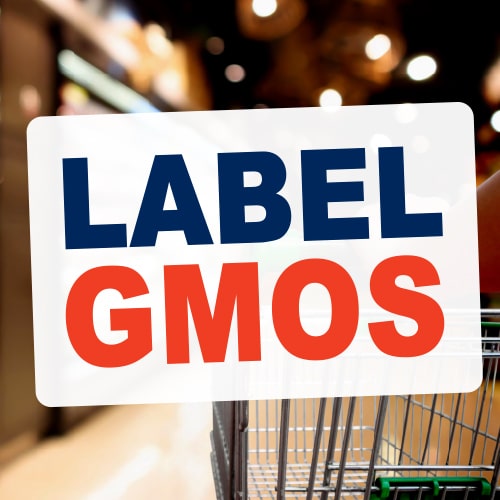Groups denounce government approvals as reckless
Ottawa. Monday, November 19, 2012. Today, civil society groups Équiterre, Nature Québec, the Canadian Association of Physicians for the Environment, Prevent Cancer Now, the Canadian Biotechnology Action Network, and Vigilance OGM denounced regulatory approval of Canada’s first corn and soy crop plants genetically engineered (also called genetically modified or GM) to tolerate doses of the herbicide 2,4-D. The groups say that the new GM crops, developed Dow AgroSciences, will lead to increased herbicide use, with more toxic pesticides in the environment and our food.
“The federal government has recklessly approved a GM food crop that is tolerant to yet another toxic pesticide, even though earlier GM glyphosate-tolerant crops already created superweeds and increased pesticide use. These same problems will be recreated by 2,4-D crops,” said Dr. Warren Bell (MD) of the Canadian Association of Physicians for the Environment, “Our environment, food and population will be increasingly exposed to another hazardous product.”
“This century’s epidemiological research of 2,4-D formulations continues to show elevated risks of cancers, particularly non-Hodgkin’s lymphoma,” said Dr. Meg Sears (PhD) of Prevent Cancer Now. Research has shown 2,4-D to be an endocrine disruptor, and that 2,4-D can be persuasively linked to cancers, neurological impairment and reproductive problems, and may affect the immune system. (1) Norway, Denmark and Sweden have banned 2,4-D.
“2,4-D-tolerant crops are a declaration of failure by the biotech industry. Existing GM herbicide tolerant crops are failing because weeds are becoming resistant,” said Lucy Sharratt of the Canadian Biotechnology Action Network. “2,4-D crops are, at best, a Band-Aid solution for farmers. GM crops are trapping both farmers and consumers on an escalating chemical treadmill.” 30 weeds around the world are already resistant to 2,4-D and earlier this year, 2,4-D resistant waterhemp was reported in the U.S.
GM 2,4-D-tolerant crops have been developed to replace GM glyphosate-tolerant crops because many weed species have become resistant to glyphosate, rendering the herbicide useless for weed management. (2) Herbicide tolerant crops are engineered to withstand spraying of particular chemical pesticides. (3)
A recent analysis of U.S. government data shows that herbicide tolerant weeds have incrementally increased the use of herbicides on GM hectares/acres every year since 2002. (4) The use of herbicides in the U.S. has increased by 239 million kilograms in the 1996-2011 period. This analysis also predicts that new 2,4-D-tolerant GM corn will increase the use of 2,4-D on corn in the U.S. by more than 30-fold over 2010 levels. The new 2,4-D soybean is stacked with a second GM trait for resistance to the herbicide glufosinate, and biotech companies Monsanto and BASF are developing dicamba-tolerant crops.
“The governments of Quebec, Ontario and Nova Scotia have already banned 2,4-D for cosmetic use because of environmental and health concerns, particularly risks to children,” said Nadine Bachand of Équiterre. “The federal governments should limit our exposure to pesticides that could cause reproductive problems and cancers rather than allow for expanded use of 2,4-D.”
“The Quebec Ministry of Environment has confirmed that use of glyphosate-tolerant GM corn has increased the amount of glyphosate in our surface water. We can only assume the same will happen again with the widespread use of 2,4-D-tolerant GM corn,” said Christine Gingras of Nature Québec and president of Vigilance OGM, “The introduction of 2,4-D-tolerant crops will increase the cocktail of chemical toxins in our waterways but we have little knowledge of potential aggregate and synergistic effects.”
-30-
For more information: Mylène Bergeron, Communications, Nature Québec, 418 931 1131; Loïc Dehoux, Media Relations, Équiterre, 514 605 2000; Meg Sears, Prevent Cancer Now 613 297 6042; Lucy Sharratt, Canadian Biotechnology Action Network 613 241 2267 ext 25.
Notes to Editors:
1) Sears, Meg, C Robin Walker, Richard H van der Jagt, and Paul Claman. “Pesticide Assessment: Protecting Public Health on the Home Turf.” Paediatrics & Child Health 11, no. 4 (April 2006): 229–234. Available at: http://www.ncbi.nlm.nih.gov/pmc/articles/PMC2528613/
2) Two glyphosate-resistant weeds (Giant Ragweed and Canada fleabane) have been found in Ontario and one (kochia) in Alberta. There are now 22 glyphosate-resistant weeds in the U.S.
3) Glyphosate is the active ingredient in Monsanto’s Roundup herbicide, the biggest selling pesticide in the world, and is twinned with Monsanto’s GM “Roundup Ready” herbicide-tolerant soy, canola and corn widely grown in Canada and the U.S.
4) Charles M. Benbrook, “Impacts of genetically engineered crops on pesticide use in the U.S. – the first sixteen years” Environmental Sciences Europe, Vol. 24:24, 28 September 2012.





